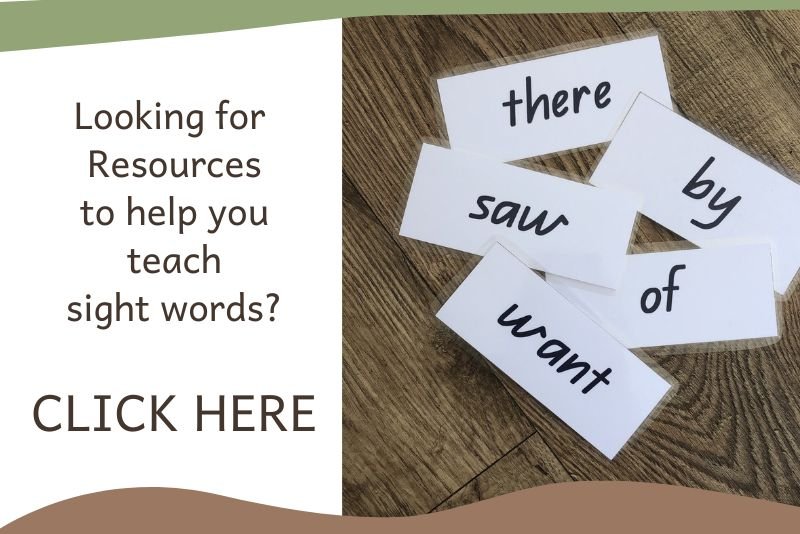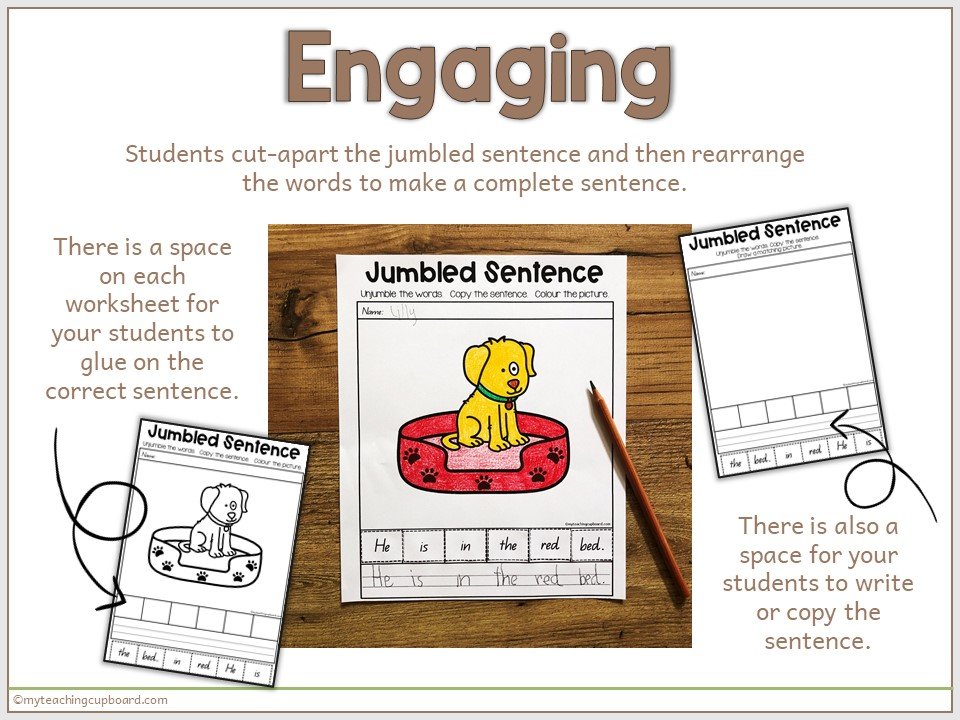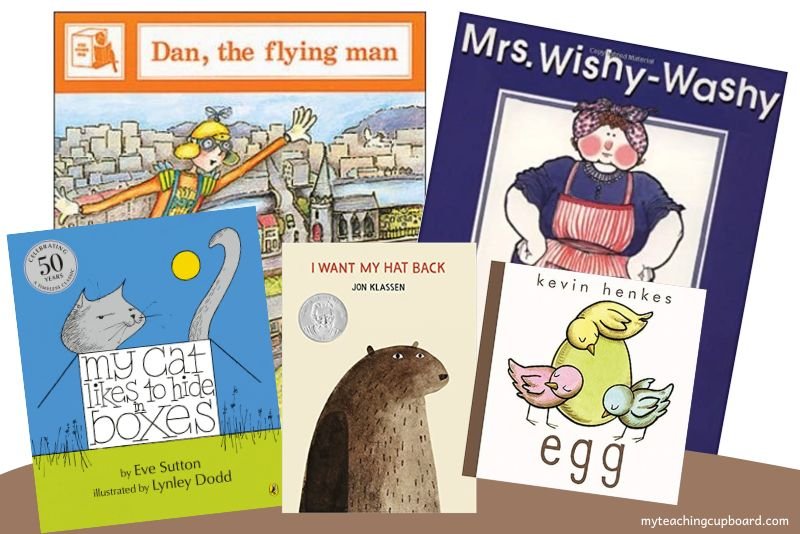Decodable Sentences with CVC Words for Kindergarten
Are you looking for decodable sentences with CVC words? Decodable sentences play a vital role in laying the foundation for early literacy development and children just learning to read.
Discover the incredible significance of CVC (Consonant-Vowel-Consonant) words in this blog post and download a free comprehensive list of CVC words and CVC word sentences perfect for your classroom.
Plus, we've got you covered with nine highly effective reading activities to help your students master their decoding skills and practice reading sentences with CVC words.
Read on to discover the importance of decodable sentences and how they can accelerate reading proficiency in young children. In this blog post, you’ll learn a range of up-to-date and research-based strategies to effectively engage your young students in learning to read.
You’ll also get some examples of CVC sentences, so you can use them in your classroom and see for yourself the progress your students make and how excited they are as they begin to decode CVC sentences independently.
What are CVC Words?
CVC words are short 3 letter words with a consonant, a vowel, and another consonant. They are perfect for introducing children to decoding or sounding out words. If you have students ready to segment or blend phonemes, you must be using CVC words.
Why use Decodable Sentences with CVC Words?
Kindergarten teachers need to use decodable CVC sentences with their early readers for several important reasons. Let's explore why incorporating decodable sentences into your teaching strategies can greatly benefit your young students:
Phonics Development: Decodable sentences with CVC words provide an excellent opportunity for children to apply their phonics knowledge. When children can match phonemes to alphabet letters, they can start to decode words by breaking them down into individual sounds and then blending the sounds together to form words. Decodable words and sentences will strengthen a child’s phonemic awareness, which is an essential skill for reading fluency and comprehension.
Building Confidence: Decodable sentences offer early readers a sense of achievement and success. As children decode and read sentences independently, they experience a boost in their confidence and self-esteem. This positive reinforcement encourages them to tackle even more challenging texts and motivates them to practice more and more. They will be well on their way to becoming proficient readers!
Progress Monitoring: Using decodable sentences allows teachers to assess students’ progress quickly and easily. By observing a child’s ability to decode and understand CVC words within sentences, you will be able to identify areas of strength and any areas that require further support. The information you get from using these types of sentences can guide your instructional planning and will help you differentiate lessons to meet your individual student’s needs.
Contextual Understanding: Decodable sentences provide a meaningful context for practicing newly acquired reading skills. Instead of isolated words, students encounter words in sentences that make sense and convey a message. This contextual understanding enhances their comprehension abilities and helps them connect words and their meanings.
Fluency Development: In my classroom, I discovered that for my young learners to become fluent readers who read with comprehension, they needed to develop strategies to recognise words with automaticity.
Fluency is a key component of proficient reading. By repeatedly encountering CVC words in decodable sentences, early readers develop automaticity in word recognition and fluency in reading. This fluency lays the groundwork for reading more complex texts with ease and with comprehension.
Independent Reading: Decodable sentences empower children to become independent readers. As they gain confidence and proficiency in decoding CVC words, they can apply their skills to read simple texts on their own. This early experience of reading independently fosters a lifelong love for reading and sets the stage for further independent reading success.
Using decodable sentences with CVC words in your classroom will provide a structured and supportive environment for your early readers. These simple sentences enhance phonics development, boost confidence, allow you to monitor progress, foster contextual understanding, develop fluency, and pave the way for independent reading.
Ultimately, using decodable sentences creates a solid foundation for building strong reading skills and nurturing a lifelong passion for reading in our young students.
CVC Words and the Science of Reading
There’s plenty of research to back up using CVC words to teach young children important reading skills like decoding.
Have you heard about The Science of Reading Research? It's like a collection of information gathered from different fields like developmental psychology, educational psychology, cognitive science, and cognitive neuroscience. It's like finding a treasure chest full of research-based information on teaching reading!
The Science of Reading research explains the best ways to help children become competent readers. This research tells us that using special words called CVC (Consonant-Vowel-Consonant) words is really important when we teach kids how to read. These words are like building blocks for reading success. Here are some important things we can learn from the research:
Phonics Instruction and CVC Words: Phonics, the understanding of the relationship between sounds and letters, is a crucial aspect of reading development. CVC words provide an ideal starting point for phonics instruction because they are made up of simple, predictable letter-sound patterns.
Decoding Skills and CVC Words: Decoding refers to the ability to sound out words by translating individual letter sounds into their corresponding phonemes. CVC words effectively teach decoding skills because they typically follow consistent letter-sound patterns. Explicit instruction and practice with CVC words will significantly enhance your student’s decoding abilities.
Phonemic Awareness and CVC Words: Phonemic awareness is all about identifying and manipulating individual sounds in spoken words. It is a necessary skill for a child’s reading success.
If you are interested in delving deeper into phonemic awareness and phonological awareness, you will want to read this blog post: Teaching Phonological Awareness, Syllables and Phonemic Awareness
Reading Fluency and CVC Words: CVC word fluency plays a fundamental role in developing word recognition skills. As early readers encounter CVC words frequently, they become more familiar with common letter patterns, and they begin to quickly recognise and read these words. Automaticity in word recognition will allow your students to focus their cognitive thinking on comprehension, which will lead to improved reading fluency and understanding.
Transferability and CVC Words: The skills students learn when they decode CVC words extend way beyond simple word patterns. Once children master the decoding strategies associated with CVC words, they can apply these skills to more complex word structures and texts. This transferability highlights the importance of building a strong foundation with CVC words in early reading instruction.
If you are interested in learning more about The Science of Reading and the research on CVC words, you can find out more here on this blog post: The Science of Reading Decoding Strategies with CVC Words
In summary, the Science of Reading Research emphasises the significant role CVC words play in early literacy instruction. Teaching and practicing CVC words will improve your student’s phonics knowledge, decoding skills, phonemic awareness, word recognition, and reading fluency. Using CVC words in your reading lessons and activities will set the stage for your student’s reading success.
The Steps to Follow to Teach Students to Read CVC Words in Sentences
Explicitly teach Phonological Awareness and Phonemic Awareness
Explicitly teach Phonics so your students know the sound each letter makes and can say the sounds of each letter out loud.
Introduce CVC words and teach your students to say the sounds of each letter and blend them into a word. Encourage them to look at the letters and say the whole word. Ensure you connect their phonemic awareness and phonics skills by teaching your students to tie each sound in the CVC word to the letter(s) that make it.
Build Reading Comprehension so your students read the CVC word and understand what it means.
Introduce CVC Words in Sentences. Build reading fluency and comprehension by practising reading CVC words in sentences.
What about Common Sight Words?
Now let’s look at the elephant in the room – sight words!
I am a big supporter of explicit phonics instruction. It is necessary to help children become independent readers, but I have found it does not help my beginning Prep readers when they encounter irregular words such as said, was, or saw.
Unfortunately, these types of words are so frequent in the PM reading series they cause anxiety and grief to my decoding students. I found that if my students were to have early success in their reading journey, these words had to be learned to the point of automaticity.
They had to be learned so well that the visual patterns of these words were stored in their visual memories or mental lexicons and immediately recognised when encountered in a text.
Research into practice states that this is where comprehension starts, and the larger the pool of words in a child’s mental lexicon, the better equipped he will be to comprehend what he is reading. The Research into practice series produced by the DECS Literacy Secretariat focuses on the research that underpins the Big Six components. It states that sight words should be taught explicitly and systematically rather than attempting to teach them when encountered in text.
When a child tries to focus on one of these tricky-to-decode words in a story, it's actually easier for most children to learn this word separately at first. It's important to note that recognising words in isolation doesn't guarantee they will be recognised as quickly when a child comes across them in a text.
For this reason, it is very important to give children regular and repeated practice of their newly learned sight words in context. Once explicitly taught, sight words need immediate consolidation and practice in text.
I believe it is still important to spend time explicitly teaching sight words.
Now you know what CVC words are and why they are so important, let’s explore some effective reading activities that will have your students reading CVC words in sentences in no time.
9 Easy Ways to Practice Reading CVC Words in Sentences
Practicing reading CVC words in sentences can be fun and engaging for your kindergarten kids.
Here are 9 easy and fun ways to incorporate CVC word practice into your classroom reading activities:
1. Flip Sentences
When I was teaching my Prep students, I found I needed simple sentences my students could decode easily and practice their emerging decoding skills on. Unfortunately, the only school readers we had access to were the PM starter reading books, which weren’t easy to decode.
So, I designed my own CVC word sentences for my students. I can’t believe how often we use them. They are the perfect resource for independent reading practice. My students love them because they are fun and easy to read. They are so popular and useful that we use them in our guided reading lessons and literacy rotations too. I even sent a few sets home for homework.
I use this resource to make fun and engaging Flip Sentences. They are a great supplement to my reading program with my beginning readers. The 56 sentences in this download contain common sight words and decodable CVC words. There are 2 versions included. One version is in Queensland Beginners font, and the other version is in a standard Kindergarten Elementary font.
I usually use these Flip Sentences in my small group literacy rotations. Children work with a partner. One child reads the first sentence, and their partner follows along. If the sentence is read fluently and decoded correctly, the listening partner says, “flip it”. The reader flips the sentence over to reveal the matching illustration. This gives the children an opportunity to self-check their reading accuracy. You have to love self-checking resources! They are perfect for independent reading practice and are hard to come by in the early years. The children then swap roles with the listening partner becoming the reader and decoder.
The sight words in my Flip Sentences are: I, am, a, we, to, and, here, my, little, go, come, see, like, she, look, he, the, me.
2. Word Hunts
Create word hunt activities where children search for specific CVC words within sentences. Give your students some sentences containing CVC words, and have them underline, highlight or circle any CVC words they find. This activity helps reinforce word recognition and encourages careful reading too.
3. Jumbled Sentences
Make sentence strips by writing sentences on strips of paper. The students cut them up into individual words. Then your kids need to rearrange the jumbled sentence so that they make a complete sentence again. This hands-on activity is heaps of fun. It promotes reading comprehension and sentence structure.
Want them already done for you?
My set of 40 jumbled sentences is such a fun and engaging way for your students to learn and practice early literacy skills. These simple cut-and-paste sentences contain a progressive list of sight words, decodable text, and CVC word families.
Versions with both Australian and American spelling and all the Australian beginner fonts, and a kindergarten writing font are included.
Your students just cut apart the jumbled sentence and then rearrange the words to make a complete sentence. There is a space on each worksheet for your students to glue on the correct sentence and a place to write or copy the sentence if you want them to practice their writing too.
There are even two styles in this resource, so you can easily differentiate and choose a worksheet to match any child’s developmental needs.
Jumbled sentences are an excellent early literacy activity. With 3-8 words in each sentence and using a progressive list of high-frequency words and easy-to-decode CVC word families, your students will learn and practice:
Sentence structure
Concept of a sentence
Concept of a word
Punctuation
Reading fluency
Sight word recognition
Decoding skills
Word families
Handwriting
Sentence writing
The clean and simple layout of these jumbled sentence worksheets is less distracting and will help your students to stay focused and on task, and the predictable format will also ensure your students quickly learn the expected process so they can complete these worksheets independently.
Use them for
Word work activities
Literacy centers
Morning work
Literacy rotations
Independent work
Homework
Fast finishers
Literacy intervention
Don’t you find when literacy activities are fun and purposeful, your children are engaged and learning?
Oh, this is Set 1. It is the starter set. When your students master this level, you might be looking for more challenging worksheets, so there’s another set to extend your kids. It’s my other Jumbled Sentence pack - Jumbled Sentences with common digraphs – Set 2
4. Picture-Word Match
To play this fun game, prepare some picture cards representing CVC words and make some corresponding sentence cards. Children have to match the picture cards with the correct sentence cards. This will help them associate CVC words with their meanings in a sentence context.
If you don’t have time to make these, you could use my flip sentences. There’s already a set of 56 sentences and matching pictures in this product.
5. Fill in the Blank
Make cloze reading sentences by providing your students with reading sentences with missing CVC words. Your children will need to fill in the blanks with the correct CVC words. This activity strengthens their understanding of sentence structure and encourages word-sentence integration.
There are 20 sentences already done for you in my FREE CVC Words list. This freebie is a comprehensive CVC Word List you can download and have ready at your fingertips. Say goodbye to all those countless hours spent searching for suitable words or trying to think up decodable CVC word sentences. Grab the free set here 👇
6. Roll and Read
Create a dice or spinner with CVC word options. Also, write out a list of simple sentences so that you have a sentence using each of the CVC words on your spinner or dice.
Your kids roll the dice or spin the spinner and select a CVC word. They then must read a corresponding sentence containing that word. This game adds an element of chance and excitement to your reading practice.
7. Sentence Building
Give your children a collection of illustrated CVC word cards. They can use these cards to construct their own sentences. Encourage them to read their sentences aloud to each other. This activity will reinforce both sentence formation and reading skills.
There’s a set of 36 FREE illustrated CVC word cards already done for you HERE in my Free Resource Library.
8. Storytime Fun
Choose simple storybooks or short passages that contain heaps of CVC words. Read them aloud to your children and ask them to identify the CVC words within the text. Whenever they hear a CVC word, they must raise their hands or clap. This activity promotes listening skills, word recognition, and comprehension.
If you are lucky enough to have decodable readers in your school, these would be perfect for this type of activity. Otherwise, keep a look out for picture books that contain a lot of CVC words.
My cat likes to hide in boxes by Eve Sutton, I Want My Hat Back by Jon Klassen, Egg by Kevin Henkes, and Mrs. Wishy-Washy or Dan, the Flying Man by Joy Cowley are great ones to get you started.
9. Digital Resources
Use educational apps or online platforms that offer interactive activities focused on CVC words in sentences. Many digital resources provide engaging games, exercises, and sentence-building activities for kindergarten learners.
By using some of these easy and engaging strategies in your early years literacy lessons, your kids will learn CVC word recognition and sentence reading skills and be developing their reading fluency too.
Want a done-for-you list of CVC words you can use when you play these games or work on these activities with your class?
Don’t forget to download my FREE CVC Word List.
CONCLUSION
In this blog post, we have explored the power of decodable sentences with CVC words and how they can support early readers in Prep and kindergarten. By using these simple yet effective strategies, you will be able to create engaging and purposeful reading experiences for your young students.
We looked at the Science of Reading Research and how it strongly supports using CVC words as a foundation for early literacy instruction. We have seen how practicing CVC words within sentences
contributes to phonics development.
builds confidence.
can help you assess and monitor student progress.
enhances contextual understanding.
develops fluency.
promotes independent reading.
By providing opportunities for your students to engage with decodable sentences, you’ll give them the essential skills needed to unlock the wonderful world of reading.
Kindergarten children will build a strong foundation for their reading journey through explicit phonics instruction, word recognition practice, and sentence comprehension activities.
If you found this blog post on decodable sentences with CVC words helpful, please consider sharing it with other educators.
Just CLICK the sharing box below.👇




















